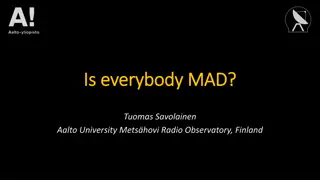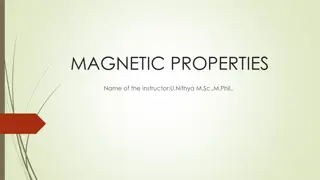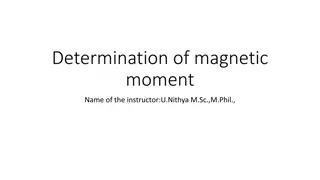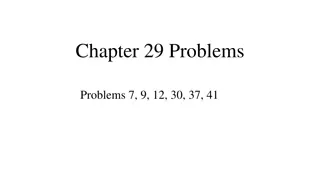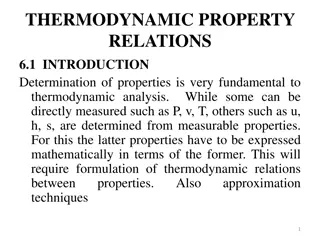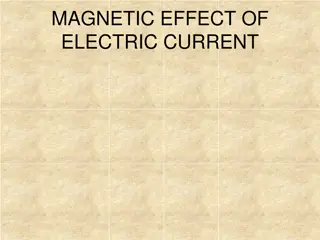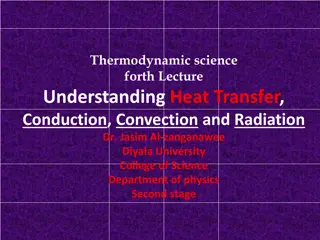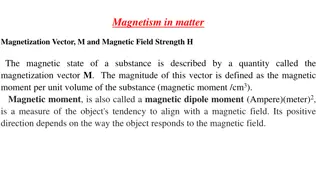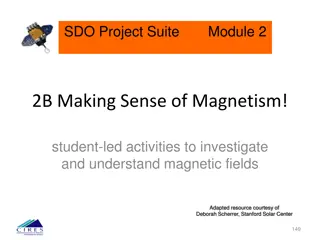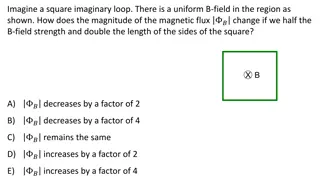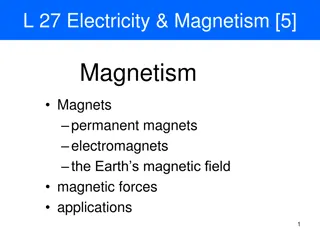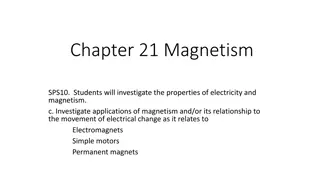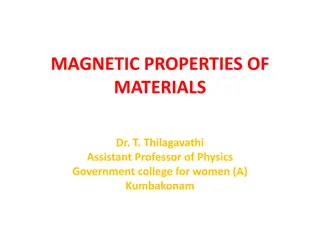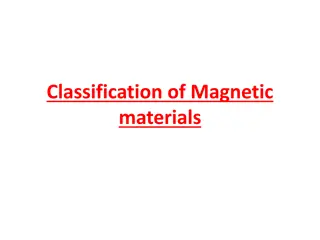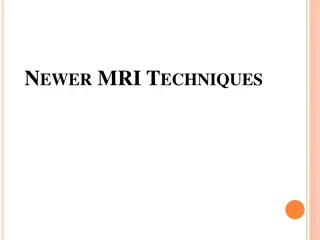Thermodynamic Properties of Magnetic Substances
Delve into the thermodynamic potential, free energy, and magnetization of magnetic substances in relation to electric and magnetic fields, exploring the intricacies of irreversible processes, work done, and energy densities.
Download Presentation

Please find below an Image/Link to download the presentation.
The content on the website is provided AS IS for your information and personal use only. It may not be sold, licensed, or shared on other websites without obtaining consent from the author.If you encounter any issues during the download, it is possible that the publisher has removed the file from their server.
You are allowed to download the files provided on this website for personal or commercial use, subject to the condition that they are used lawfully. All files are the property of their respective owners.
The content on the website is provided AS IS for your information and personal use only. It may not be sold, licensed, or shared on other websites without obtaining consent from the author.
E N D
Presentation Transcript
Ampere's Law It states that: the line integral of B around any closed path equal to 0times the net current through the area enclosed by the path. The positive sense of current is determined by a right- hand rule
Electromagnetic Induction Faraday's Law The common element in all induction effects is changing magnetic flux through the circuit. Remember that If B is uniform over a flat area A .
Faraday's law of induction states: The induced emf in a closed loop equals the negative of the time rate of change of magnetic flux through the loop. In symbols, Faraday's law is If we have a coil with N identical turns, and if the flux varies at the same rate through each turn, the total rate of change through each turn is 3. Lenz's Law Lenz's Law is a convenient method for determining the direction of an induced current or emf. Lenz's law is not an independent principle: it can be derived from Faraday's law. Lenz's law states: The direction of any magnetic induction effect is such as to oppose the cause of the effect.
4. Motional Electromotive Force Figure shows the rod moves to the right at a constant velocity v in a uniform magnetic field B directed into the page. A charged particle q in the rod experiences a magnetic force with magnitude F = q vB . This magnetic force causes the free charges in the rod to move, creating a positive charge at the upper end and a negative charge at the lower end. This in turn creates an electric field E within the rod. There is a downward electric force with magnitude qE to cancel exactly the upward magnetic force with magnitude qvB . Then qE = qvB and the charges are in equilibrium. The magnitude of potential difference Now suppose the moving rod slides along a stationary U-shaped conductor, forming a complete Circuit.
No magnetic force acts in the charges, but the charge redistributes itself, creating an electric field within it. This field establishes a current in the direction shown. The moving rod has become a source of electromotive force. We call this emf a motional electromotive force, denoted by . Note: The motional emf; length and velocity perpendicular to uniform B .
MAGNETIC PROPERTIES OF MATERIALS All matter is composed of atoms and atoms are composed of protons, neutrons and electrons. The protons and neutrons are located in the atom's nucleus and the electrons are in constant motion around the nucleus. Electrons carry a negative electrical charge and produce a magnetic field as they move through space. A magnetic field is produced whenever an electrical charge is in motion. This may be hard to visualize on a subatomic scale but consider an electric current flowing through a conductor. When electrons (electric current) are flowing through the conductor, a magnetic field forms around the conductor. The magnetic field can be detected using a compass. Since all matter is comprised of atoms, all materials are affected in some way by a magnetic field. However, not all materials react the same way. At the atomic level, the motion of an electron gives rise to current loop magnetic dipole moment magnetic field Magnetic dipole moment Where N is the number of electrons, i is the current, and A is the area. It is a vector quantity and its direction can be found by the right hand screw rule.
The magnetic moments associated with atoms have three origins: 1 The electron orbital motion. 2 The change in orbital motion caused by an external magnetic field. 3 The spin of the electrons. Magnetization It is equal to the magnetic dipole moment per unit volume Permeability Permeability is a material property that describes the ease with which a magnetic flux is established in the component. It is the ratio of the magnetic flux density to the magnetic intensity and, therefore, represented by the following equation: Magnetic susceptibility ( m) It represents the response of a system to the external magnetic field. When a material is placed within a magnetic field, the material's electrons will be affected. However, materials can react quite differently to the presence of an external magnetic field. This reaction is dependent on a number of factors such as the atomic and molecular structure of the material, and the net magnetic field associated with the atoms. In most atoms, electrons occur in pairs.
Each electron in a pair spins in the opposite direction, so when electrons are paired together, their opposite spins cause their magnetic fields to cancel each other. Therefore, no net magnetic field exists. Alternately, materials with some unpaired electrons will have a net magnetic field and will react more to an external field. Most materials can be classified as ferromagnetic, diamagnetic or paramagnetic. Relation between the magnetic field (B), external magnetic field (H) and magnetization (M): where mis the susceptibility, is the permeability, and ois the permeability of free space (air). Diamagnetic materials m 0 Small and negative susceptibility. Slightly repelled by a magnetic field. Do not retain the magnetic properties when the external field is removed. Magnetic moment opposite direction to applied magnetic field. Solids with all electrons in pairs - no permanent magnetic moment per atom.
Properties arise from the alignment of the electron orbits under the influence of an external magnetic field. Most elements in the periodic table, including copper, silver, and gold, are diamagnetic. m(argon) ~ -1.0 x 10-8 m (copper) ~ -1.0 x 10-5
Paramagnetic materials m> 0 small Small and positive susceptibility. Slightly attracted by a magnetic field. Material does not retain the magnetic properties when the external field is removed. Properties are due to the presence of some unpaired electrons and from the alignment of the electron orbits caused by the external magnetic field. Examples - magnesium, molybdenum, lithium, and tantalum. m(oxygen) ~ 2.0 x 10-6 m(aluminum) ~ 2.1x10-5
Ferromagnetic materials Large and positive susceptibility. Strong attraction to magnetic fields. Retain their magnetic properties after the external field has been removed. Some unpaired electrons so their atoms have a net magnetic moment. Strong magnetic properties due to the presence of magnetic domains. In these domains, large numbers of atomic moments (1012to 1015) are aligned parallel so that the magnetic force within the domain is strong. When a ferromagnetic material is in the demagnetized state, the domains are nearly randomly organized and the net magnetic field for the part as a whole is zero. When a magnetizing force is applied, the domains become aligned to produce a strong magnetic field within the part. Iron, nickel, and cobalt are examples of ferromagnetic materials. Magnetization is not proportional to the applied field. m(ferrite) ~ 100 m(iron) ~ 1000 Magnetic Domains Ferromagnetic materials get their magnetic properties not only because their atoms carry a magnetic moment but also because the material is made up of small regions known as magnetic domains. In each domain, all of the atomic dipoles are coupled together in a preferential direction.
This alignment develops as the material develops its crystalline structure during solidification from the molten state. Magnetic domains can be detected using Magnetic Force Microscopy (MFM) and images of the domains like the one shown below can be constructed. During solidification a trillion or more atom moments are aligned parallel so that the magnetic force within the domain is strong in one direction. Ferromagnetic materials are said to be characterized by "spontaneous magnetization" since they obtain saturation magnetization in each of the domains without an external magnetic field being applied. Even though the domains are magnetically saturated, the bulk material may not show any signs of magnetism because the domains develop themselves are randomly oriented relative to each other.
Ferromagnetic materials become magnetized when the magnetic domains within the material are aligned. This can be done by placing the material in a strong external magnetic field or by passes electrical current through the material. Some or all of the domains can become aligned. The more domains are aligned, the stronger the magnetic field in the material. When all of the domains are aligned, the material is said to be magnetically saturated. When a material is magnetically saturated, no additional amount of external magnetization force will cause an increase in its internal level of magnetization.


